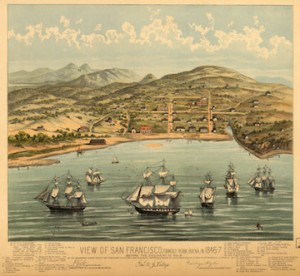 It’s hard to even know where to start. This PowerPoint slide “explaining” Twitter’s new strategy statement is amazingly incoherent. What does the Venn diagram mean? What is the difference between the company’s scope and their competitive advantages? And what could “objective” possibly mean here? How is “be[ing] one of the top revenue generating companies in the world” a strategy? Could they fit the word “world” in one more time? Dennis K. Berman of the Wall Street Journal points out via Twitter itself that the slide includes “35 words, 62 syllables, 4 clauses, [and] 2 grammatical errors.” (He also retweeted a sentence diagram of it.)
It’s hard to even know where to start. This PowerPoint slide “explaining” Twitter’s new strategy statement is amazingly incoherent. What does the Venn diagram mean? What is the difference between the company’s scope and their competitive advantages? And what could “objective” possibly mean here? How is “be[ing] one of the top revenue generating companies in the world” a strategy? Could they fit the word “world” in one more time? Dennis K. Berman of the Wall Street Journal points out via Twitter itself that the slide includes “35 words, 62 syllables, 4 clauses, [and] 2 grammatical errors.” (He also retweeted a sentence diagram of it.)
But others have written more detailed reviews of this remarkable sentence. The Washington Post, The Harvard Business Review, and Valleywag have all covered it.


